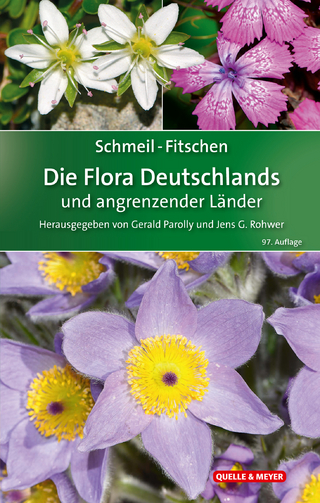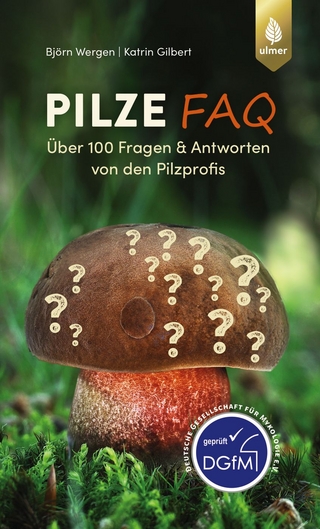
Cell Biology and Immunology of Leukocyte Function
Academic Press Inc (Verlag)
978-0-12-569650-0 (ISBN)
- Titel ist leider vergriffen;
keine Neuauflage - Artikel merken
Participants Preface Acknowledgments Chapter I Lymphocyte Activation Section 1 Plasma Membrane Structure and Function The Lymphocyte Membrane and the Cytoskeleton Triggering Signals for T-Cell Activation Studies of Lymphocyte Activation Functional Organization of the Lymphocyte Plasma Membrane Relating to Cell Activation Investigations on the Role of Ca2+ as a Potential Second Messenger for T and B Lymphocyte Activation and Its Relevance in DNA Synthesis A Model for the Control of Potassium Transport in PHA-Stimulated Human Blood Lymphocytes Effect of Con A on the Cation Affinity of the Na+-K+- Pump in Lymphocytes Activation of Lymphocytes without Mitogen by Increasing the Calcium Content in the Cell Culture Medium Workshop Report: Membrane Mechanisms in Lymphocyte Activation Section 2 Macromolecular Synthesis Synthesis and Processing of RNA in Stimulated Fibroblasts and Lymphocytes Regulation of Protein Synthesis during Lymphocyte Activation by Phytohaemagglutinin Evidence for and against Unusual Species of DNA in Lymphocyte Activation Studies on mRNA in Resting and Growing Lymphocytes V- and C-Parts of Immunoglobulin a-Chain Genes Are Separate in Myeloma Evidence of a Nonmessenger RNA which Is Rate Limiting for Protein Synthesis in Resting Lymphocytes Adenylate Cyclase in Normal and Leukemic Human Section 3 Action of Mitogens On the Commitment of Lymphocytes to DNA Replication: A Possible Role for Transglutaminase Cooperation Requirements of Mitogen-Stimulated Lymphocytes in Agarose- Gel Cultures Lectin-Binding Surface Proteins of Human T-Lymphocytes: A Comparison between Mitogenic and Nonmitogenic Lectins Parallel Induction of T-Cell Stimulation: Positive Control of T-Cell Response by Mitogen-Tested MacrophagesChapter II Lymphocyte Differentiation Section 1 Thymic Factors Biological Activities and Site of Action of the Circulating Thymic Factor Recent Developments in the Classification and Bioassay of Thymosin Polypeptides Correlation between the Cellular Levels of cAMP Cell-Mediated Immunocompetence and the Thymic Humoral Factor (THF) Immunoregulation by Thymopoietin and Bursopoietin (Abstract) In Vitro Effect of Thymic Epithelial Culture Supernatant (TES) on T-Cell Markers and Functions T-Thymus-Dependent Human Serum Factor Active on Precursors of Mature T Cells Delineation of Separate Populations of Precursor T and B Cells in the Avian Embryo Induction of B- and T-Cell Differentiation by Chicken Bursa and Thymus Reticular Epithelial Cells The Role of Prothymocytes and the Thymic Microenvironment in the Pathogenesis of Thymic Lymphomas Workshop Report: Thymic Hormones Section 2 Surface Antigen Receptors and Markers The Differences in Structure between Secreted and Cell Surface Membrane Immunoglobulins Isolation and Chemical Characterization of the Active Site of A Lymphocyte Fc Receptor Membrane Locking and the Tolerant B Cell Biological Function and Migratory Behavior of T-Lymphocytes Mediating Delayed Type Hypersensitivity Depend on the Oxidation/Reduction State of Membrane Carbohydrates Is Serological Polymorphism of Human DR Antigens Determined by Structural Differences in the Small (B) Chain? Reduced Binding of Ouabain by Chronic Lymphocytic Leukemia Lymphocytes Heterogeneity of T-Cell Surface Markers and Terminal Transferase of AKR Lymphomas: A Clue to Functional Heterogeneity Workshop Report: Leukocyte Markers and Receptors Chapter III Genetic Control and Intercellular Interactions Section 1 Genetics Alloactivation of T Lymphocytes: Alternative Pathways Why Associative Recognition? Role of the Light Chain in Studies of Linkage of Genes Controlling Idiotype and Heavy Chain Allotype A Molecular Interaction Model for Ir Gene Complementation I-Region Control of the Activity of Allogeneic Effect Factor Section 2 Intercellular Cooperation The Influence of Macrophage IR Gene Function on T and B Lymphocyte The Interaction between Initiator and Recruited T-Lymphocytes Cell-Mediated Cytotoxicity to Trinitrophenyl-Modified Autologous Cells in Mice and Men Ia Antigens on Suppressor, Amplifier, and Helper T Cells The Role of the I-Region in the Control of Macrophage T Cell and T Cell-B Cell Interaction The Monogamous T Helper Cell Human B-Cell Activation In Vitro: Antigen-Specific Helper and Suppressor Effects Are Mediated by Distinct T-Cell Subpopulations Differentiation of Helper T Cells Operative in Antibody Synthesis and Cell-Mediated Lympholysis (CML) Viruses and Alloantigens Can Act as Helper Determinants for Antibody Responses to Another Surface Antigen, THY-1 Workshop Report: Intercellular Cooperation Section 3 Suppressor Cells Immune Surveillance and Fetomaternal Relationships: Suppression of Immune Functions by Mouse Amniotic Fluid Active Cell-Mediated Suppression for Histocompatibility Determinants Produced by T Cells from Normal or Tolerant Mice Characterization of Suppressive T Cell Fc Receptor, Its Relation with the Major Histocompatibility Complex Suppressor Cells Regulating the in Vivo Induction of Cytotoxic T Lymphocytes and of Memory Cells for a Secondary in Vitro CMC Response Multiple Subpopulations of Lymphoid Cells Regulating Human B-Cell Function Workshop Report: Suppressor Cells Section 4 Soluble Immunoregulatory Molecules (Lymphokines) In Vivo Release of Lymphokines Immunological Role of Macrophage- and Lymphocyte-Derived Amplification Factors Biochemical Characterization of MIF Maf Macrophage Interactions: A Putative Glycolipid Receptor for MIF, the Existence of Two Distinct MIFs, and Their Regulation by Macrophage- Associated Esterases Different Cellular Sources for the Production of Immunue Interferon and Macrophage Migration Inhibitory Factor Biological Activities of a Macrophage Chemotaxis Inhibitor (MCI) Produced by Neoplasma Characterization of Radiolabeled Guinea Pig Lymphocyte Activation Products and Their Correlation to Macrophage Migration Inhibitory Activity Control of Growth and Differentiation in Normal and Malignant Leukocytes: The Protein Regulators MGI and TCI Cellular Interactions in Generation of Granuloid Colony-Stimulating Factor (CSF) by Lipopolysaccharide (LPS)- Stimulated Lymphoid Cells Source and Functional Characteristics of the Mitogenic Factor Inducing Continued Proliferation of Human T Cells Characterization of Immune Interferon Induced in Nude Mice Spleen Cells T-Cell Hybridomas Secreting Suppressor Factor Chapter IV Parameters of Immune Reactivity In Vitro Section 1 Cytotoxicity HLA-Restricted Killing of Male Targets by Multitransfused Females in the Cell-Mediated Lympholysis Test T-Cell Mediated Cytolysis: From the Lysis of H-2 Negative Target Cells to the Inductive Effect of Xenogeneic Serum Polar Events in T-Lymphocyte Mediated Lysis: Unidirectional Killing during Bidirectional Interaction of Cytoxic T Lymphocytes Transfer of Protein-Labeled Material to Target Cells by Cytotoxic Lymphocytes Effect of Membrane Lipid Composition on Immune Cell Function Workshop Report: Cytotoxicity Section 2 Mechanisms in Phagocyte Killing Phagocyte-Produced Free Radicals: Roles in Cytotoxicity and Inflammation The Role of Hydrogen Peroxide in the Cytotoxicity of Neutrophils to Trypanosoma dionissi A Comparative Study of Killing Mechanisms in Guinea Pig Alveolar Macrophages and Polymorphonuclear Leukocytes Stimulation of Polymorphonuclear Leukocyte Bactericidal Activity by Supernatants of Activated Mononuclear Cells and Long-Term Lymphoid Cell Lines Development and Preliminary Application of Radiometric Assays for Measuring Opsonization, Phagocytosis and Intracellular Killing Section 3 Autoimmunity Autoimmunity in Acquired Dysgammaglobulinemia of Chickens Vx Anti-Parent Cell-Mediated Lympholysis: Autoreactive Effectors and Requirement of Parental T Cells for Stimulation Suppressor Cell Regulation of Self-Tolerance Blocking of Sensitization to Encephalitogenic Basic Protein in Vitro by Synthetic Basic Copolymer (COP1) Cytotoxic Effect of Macrophages from Nyasthenic Animals on Muscle Cells in Culture Suppressor Cells Directed against Self-Receptors in Experimental Autologous Glomerulonephritis Detected by MIF Assays Section 4 Leukocytes and Tumor Cells Tumor-Induced Dualistic Suppressor Cell Regulation: Macrophages and Suppressor T Cells Opposing Tumorogenic and Immunogenic Properties of the in Vitro and the In Vivo Sublines of Moloney-Induced Tumor Antigenic Differences Exist between Cell Surface Antigens of the Local Tumor and Its Metastases Tumor Metastases and Cell-Mediated Immunity in a Model System in DBA/2 Mice. Induction and Specificity of Syngeneic Cytotoxic T Cells Iriimunosuppressor Cells in the Regulation of the Antitumor Response The Active T Rosette Test: Its Significance and Its Use Workshop Summary: Rosetting Cloning of Human T-Lymphocytes Workshop Summary: Continuous Culture of Lymphocytes Idiotype and Lymphocytes Workshop Summary: Lymphocytes and Idiotypes Chapter V Viruses and Lymphocytes Interaction of Viruses with Lymphoid Cells Biological Effects of an Antiserum Directed against Endogenous Zenotropic C-Type Virus Cell Surface Antigen Expression on Thymocytes, Thymoblasts, and Thymic Leukemia (GRSL) Cells: Relation to Differentiation and Growth Genome Organization of Retroviruses Physical Mapping of Murine Sarcoma Virus and Heteroduplex Analysis of Recombinant Murine Leukemia Viruses Analysis of Requirements for Cell-Mediated Lysis Interaction between Viral Glycoproteins and Cell Plasma Membranes Workshop Summary: Viruses and Lymphocytes Chapter VI Leukocyte Culture And Clinical Medicine B-Cell Differentiation in Multiple Myeloma Circulating T Cell Subset with a Reversible E-Rosetting Capacity in Breast Cancer and Its Role in Cell-Mediated Immunity Locomotor Activity of Leukemic Blasts from Patients with Acute Myeloid Leukemia and Its Relationship with Receptors for IgG-Fc Severe Combined Immunodeficiency Disease: A Disorder of both Immune Function and Blood Coagulation Defective T Cell-Macrophage Interaction in Leprosy Restoration of Neutrophil Chemotactic Responsiveness by Levamisole Treatment in Patients with the Hyper-IgE Syndrome Chapter VII Radiation Effects And Leukocyte Malignancy The Response of the Immune System to Ionizing Radiation Points to Radiosensitive Cellular Processes Other than Division Immunosuppression and Permanent Transplantation Tolerance across Major Histocompatibility Barriers Following Total Lymphoid Irradiation Problems Involving DNA Repair in Lymphocytes as Biological Dosimeters Author IndexSubject Index
| Verlagsort | San Diego |
|---|---|
| Sprache | englisch |
| Themenwelt | Sachbuch/Ratgeber ► Natur / Technik ► Naturführer |
| Naturwissenschaften ► Biologie ► Zoologie | |
| ISBN-10 | 0-12-569650-7 / 0125696507 |
| ISBN-13 | 978-0-12-569650-0 / 9780125696500 |
| Zustand | Neuware |
| Haben Sie eine Frage zum Produkt? |
aus dem Bereich


